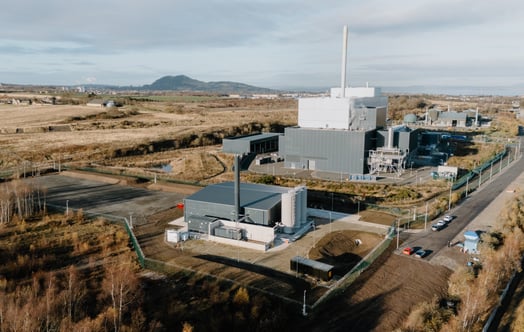
Heat network growth needs to be built on the foundations of good consumer protection standards as consumers will be the ones to live and work in the heat networks we build.
For the 500,000 customers living and working on heat networks today, there is no Ofgem protection. Most lack the sort of basic consumer protection the rest of the market take for granted. Heat Trust are the not for profit customer champions, holding the sector to account for the good of all involved. Whilst our voluntary scheme makes a tangible difference to those it covers, the planned shift to mandatory statutory regulation will be a milestone for the sector, creating a firm foundation of consumer protection standards and underpinning future growth in the sector. We need to get it right.
Heat networks have an important role to play in the decarbonisation of heat
Heat networks are distribution systems of insulated pipes delivering heat from a central source to different domestic or non-domestic premises. There are thousands of heat networks around the UK today, and the number is growing. Each uses a centralised plant to generate heat, and that means the decarbonisation of all properties connected to a single heat network can be done quickly and efficiently, often by simply changing out a single asset. This can be done without either changes to the network or disruption to customers.
Heat networks are set to play an important role in the decarbonisation of heat. The Committee on Climate Change say that heat networks could provide up to 20% of total UK heat demand by 20501. That’s 6m domestic and non-domestic customers – up from 0.5m today. That represents a doubling of market size by 2025 and a trebling by 2030.

This growth needs to be built on the foundations of good consumer protection standards. Consumers will be the ones to live and work in the heat networks we build. Consumers are the ones who will rely on the heat, depend on the suppliers, and ultimately pay for it all. If we ignore consumers, the sector will not gain the licence from consumers to grow.
Much of the market remains unregulated
And in that regard, we have a problem. Ofgem has no remit to regulate the sector, and whilst Heat Trust has made a lot of progress in our first four years of operation, our voluntary consumer protection code still covers just 10% of the market. That means that 90% of customers still lack the level of protection they need. Whilst most providers deliver a good service today, some are letting customers down. This undermines public acceptance for the sector and undermines the growth ambitions we have; growth ambitions which are central to our ability to decarbonise.
The CMA2 and BEIS3 both recognise this. A new market framework is now being developed which will move the whole sector under statutory regulation. This is welcome news. Heat and hot water re not discretionary goods like apples, pencils or industry opinion columns, and that means there should be robust standards around its provision. This is even more important given customers on heat networks cannot easily switch to other providers if they are dissatisfied.
The good news is that statutory regulation is also in the interests of the industry. Effective consumer protection standards are a rising tide that will lift all boats. The reputation of each individual heat network supplier is in part determined by the actions of all heat network suppliers. Driving standards up across the sector manages the reputation of everyone in the sector, avoiding negative publicity for all. Customer protection standards will also mean no-one can choose to provide poor service to price lower on their next contract. Customer protection standards mean a better customer experience, and satisfied customers are the fuel for future growth. This is crucial because a significant amount of taxpayer money is being used to underpin that growth. Customer protection standards therefore create the social licence for the growth we need to see.
We need to get it right
Whilst the introduction of statutory regulation is a once in a generation opportunity therefore, it will only work if we do it correctly; in terms of who is regulated, the market coverage of that regulation and the scope of protections provided.
"Ultimately our vision needs to be the provision of clean, reliable and affordable heating systems that work for customers; not standards that makes allowances for the industry."
Importantly, in a diverse and fragmented market, regulation needs to target the organisation who owns the customer relationship - the supplier. Ultimately it is the supplier who can influence the result, who can ensure service providers provide a certain standard and who can deliver for customers.
Regulation also cannot leave any customers behind, and this means ensuring that coverage applies across the whole market. We all need clean, reliable and affordable heat and hot water underpinned by good customer service. That is regardless of whether the heat network is large or small, private or public, old or new. Any move to limit the coverage of statutory regulation could leave tens of thousands of customers stuck on poorly performing heat networks. There are difficulties in this. Many heat network suppliers today are doing what they can with old and poorly performing assets. Many are small and will worry about the additional costs of regulation. These are problems we can and should overcome however, because ultimately our vision needs to be the provision of clean, reliable and affordable heating systems that work for customers; not standards that makes allowances for the industry.
The scope of regulation must also extend to all aspects of the service provision that dictate whether customers’ basic needs are being met. This means ensuring standards in areas like the transparency of key terms, accurate billing, access to redress services when things go wrong, protections for the vulnerable, fair treatment of those in debt and the provision of clear communications. There are some key differences between the heat network and regulated sector which means that we will not be able to ‘cut and paste’ a regulatory framework in. Heat networks and heat network suppliers are far more heterogeneous than their counterparts in the regulated sector for example. This will be complex, but it will be necessary.
Ultimately our vision needs to be the provision of clean, reliable and affordable heating systems that work for customers; not standards that makes allowances for the industry.
Organisations like the Heat Trust can help. We have a unique experience and insight in how heat networks work and how they can be regulated. We also have the strong foundations and capabilities to help customers, providers and policymakers alike to deliver this. And we want to, because ultimately it is in customers interests that we get this right.




